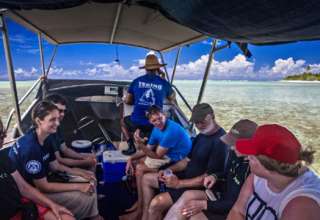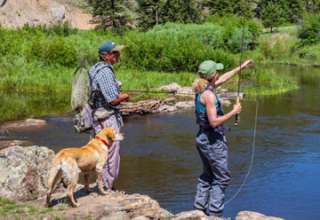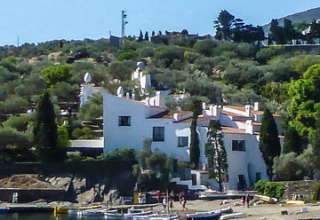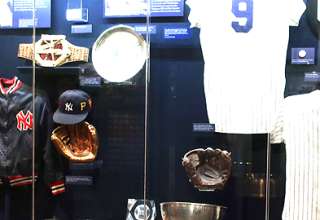LOGAN, Ohio – If you paused long enough to read the trailhead signs in Ohio’s Hocking Hills State Park, you’d find that the Black Hand sandstone underfoot was laid down 350,000 years ago, on an ancient seabed. Or you could blow off the science lesson – like I did – and push ahead to the Old Man’s Cave, past a meandering creek and down a level path. Level, it seemed, until both trail and creek abruptly vanished, swallowed up by a hole in the earth. A moment earlier I’d been slathering sunscreen on my nose. Now shadows dimmed the sky, pinched between narrow walls, and the sun’s filtered rays glanced off a cluster of half-hidden caves and a waterfall below.
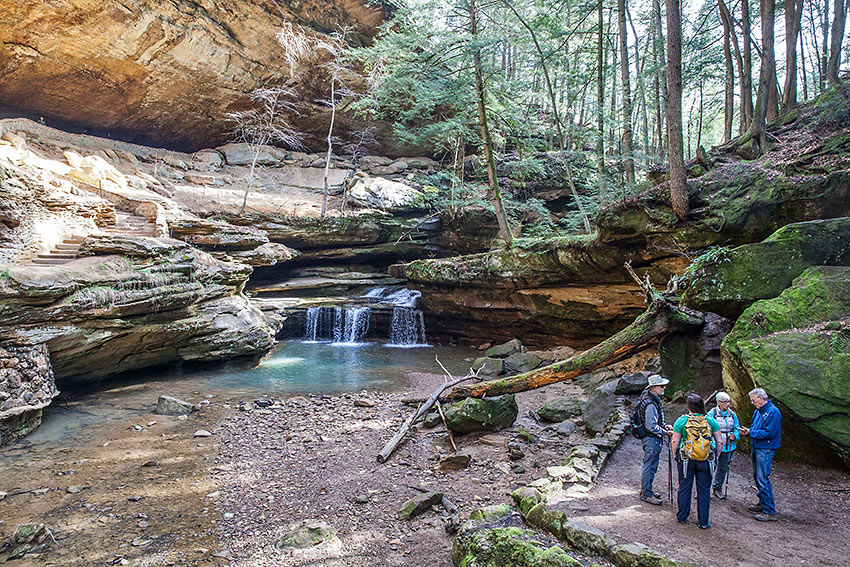
For a moment I wondered if we – my sister Mary and I – had tumbled into Rivendell, in Middle-earth. But the shapes ahead weren’t elves. They were teens on a school trip, posing for selfies and daring each other to jump in the water. “Don’t be a chicken,” teased one of the girls. “It’s nothing special. Just a creek.” But not to us, nor the hikers behind us, astonished as their surroundings. The Old Man’s Cave was as fabulous as it was unexpected. But our next day’s outing, a nature walk booked in advance, which – to my surprise – included an introduction to rappelling – outdid the caves by half.
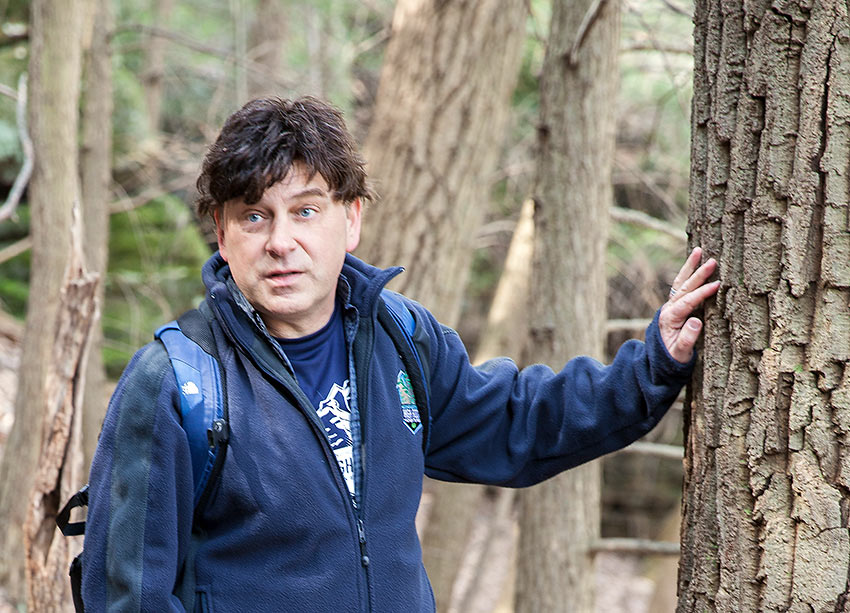
“Don’t we need a cliff to step off?” asked Mary, nervously scanning the landscape as eco-biologist Steve Roley, our guide, a rock climber and the owner of High Rock Adventures, gathered the group together. “Yeah, where’s old rocky top?” echoed the guy behind me.
But Roley, a student of native plants, was in no hurry as we strolled uphill beneath birches and hemlocks. Stopping here and there, he pointed out the edible plants that thrive beneath hemlocks, trees descended from similar hemlocks that flourished 10,000 years ago, when the climate was cooler and moister. “These here are jack-in-the-pulpits and those are may apples,” he said, moving on to a patch of greenbriar and a solitary sweet Sicily. Then Roley stopped short, next to two rocky walls. “Geeez,” said somebody, gazing skyward. But before you could snap your fingers, we’d buckled up, climbed to the top, wobbled over a narrow bridge, and one-by-one, gasped, backed off into thin air and “bumped” down the wall to the ground.
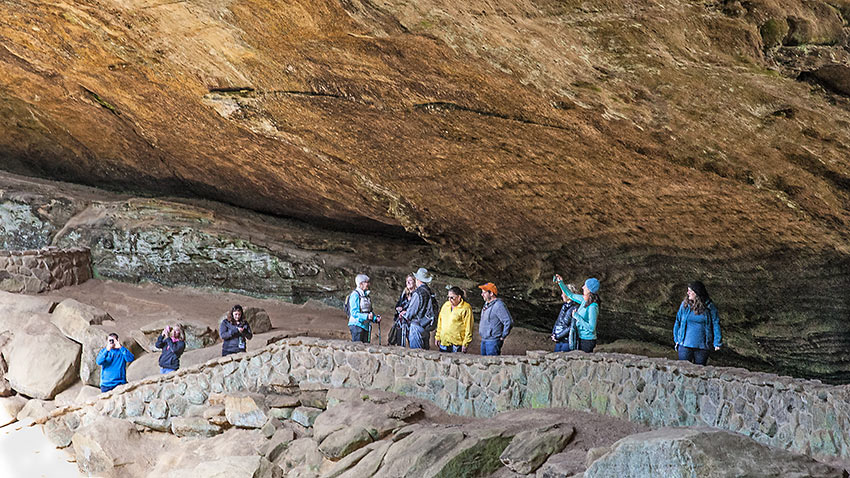
“Wow, it’s easy, let’s do it again!” clamored the group, thrilled – and relieved – that they hadn’t backed out. And to think that a month earlier, I’d written off Ohio as one of the states you fly over on your way to somewhere else. And I might have if my sister, who lives in Kent, hadn’t suggested visiting the Hocking Hills, southeast of Columbus. “C’mon, this is Daniel Boone country, with log cabins and pioneer history, like those books we used to read,” she said. “Except that it’s the 21st century. There’s zip lines, music festivals, art galleries, antique malls. Even golf, or canoeing or we can look for the caves.” “Everybody wants to see the caves,” said Audrey Martin, at the Hocking Hills Tourism Association, in Logan, the county seat. “Whether they’re nature lovers, or serious hikers, or families camping, everybody wants to get out and walk,” she said.
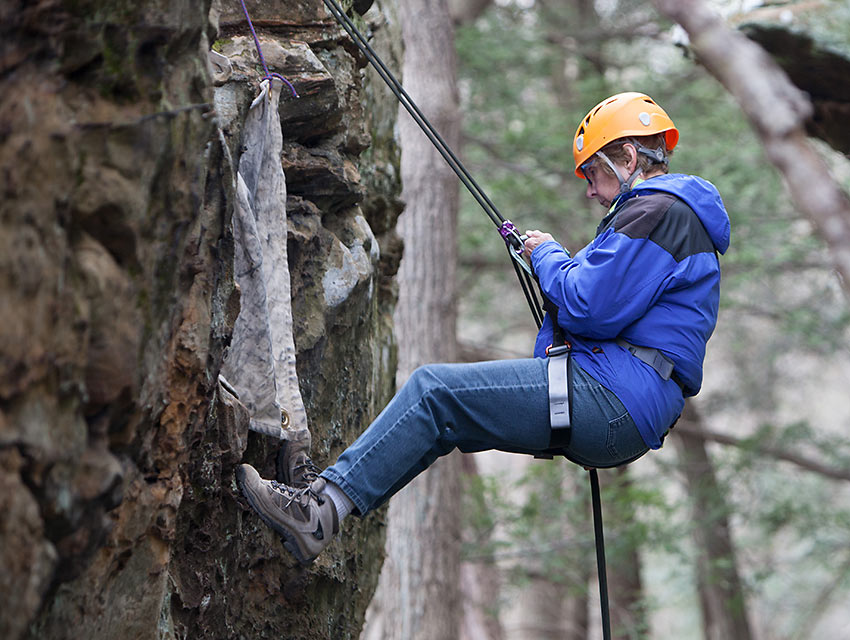
“Though the park gets an estimated 1.4 million visitors annually, the trails never seem crowded,” she said. “But come in autumn, if you can. When the weather cools and the maples and birch change colors, every hillside glows. They’re a dazzling panorama of reds, golds, bright yellows and orange. The occasional splashes of green are hemlocks. They stay green all winter.”
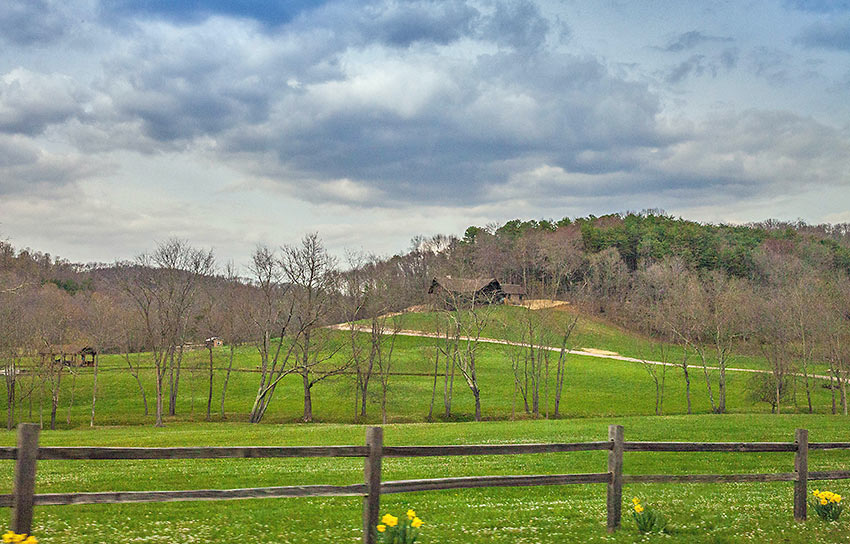
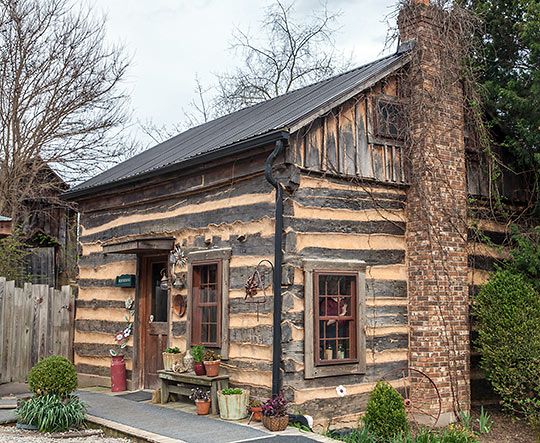
Packing up, we drove southeast to Columbus and on to Hocking County on Route 33, crossing rolling meadows and farms. Turning off, the highway narrowed to winding two-lane roads, climbing, turning and dropping back into deep valleys before climbing the next series of ridges. Cottages, barns and trailers measured the miles; past front porches, vegetable gardens and clothes lines, rusty trucks and chicken coops. Here was a motor home, there a cottage. Until our last turn onto State Route 374 and the Inn & Spa at Cedar Falls, a family-owned inn whose 1840s chinked-log cabin was now part of the kitchen, and still in use.
Perched on 75 green acres near the State Park, the Inn was a modest B&B when the owner, Ellein Grinsfelder inherited it from her mother. Today it’s classic rustic-luxury, with a cozy lodge, nine single rooms, 12 furnished log cabins (some with kitchenettes), four snappy yurts (where we stayed) and an outdoor fire pit plus benches. The restaurant, the neighborhood’s best, employs a full-time chef and supports a large and inventive menu. The 1840s cabin houses a tiny bar and half the kitchen; a meeting room seating 50 hosts girl-friend reunions, county dinners, and small weddings.
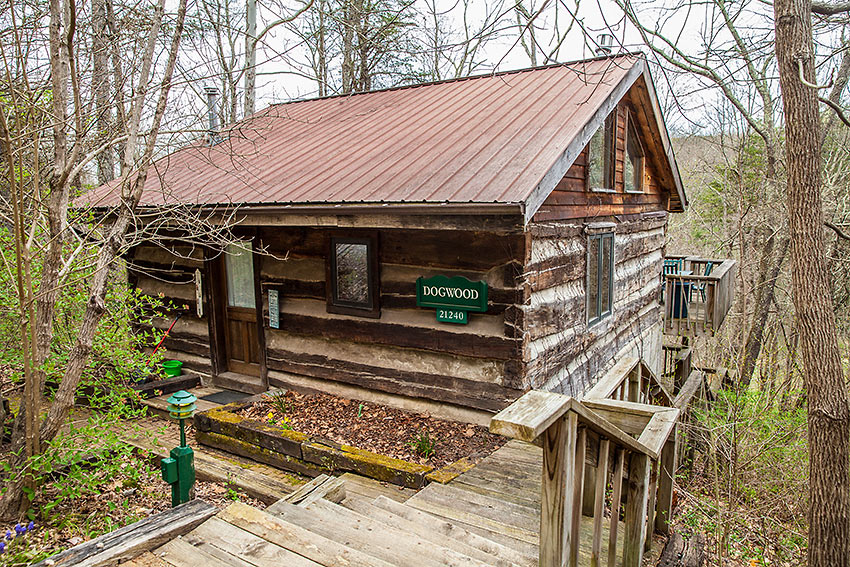
It was a brisk walk from the Inn to the State Park, handy for hiking from Cedar Falls to the Old Man’s Cave, and to the most recently opened area, Whispering Cave. The park’s other sections, close but not directly connected – Conkles Hollow, Ash Cave, Rock House and Cantwell Cliffs – add additional trails for a total of 35 miles of hiking trails and 33 miles of bridle trails.
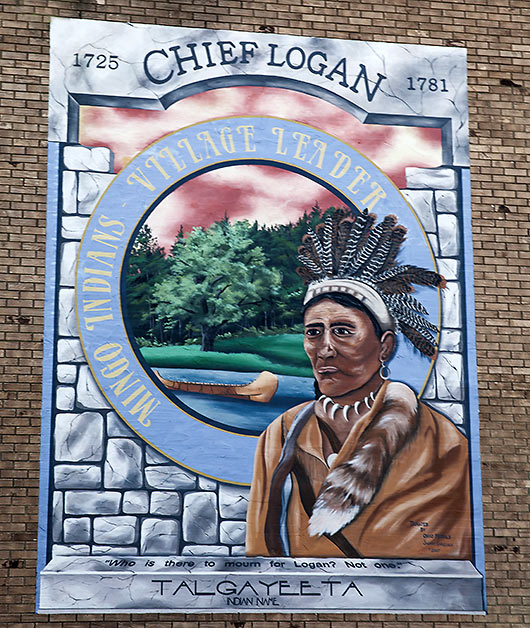
The next day we toured Logan, named for the distinguished Mingo Chief who befriended the region’s first white settlers and whose real name was Talgayeeta. Welcoming to all, he preached and practiced friendship, but was brutally murdered, along with his family, by two Indian-hating white settlers. Touring the town center we spotted his name and a picture on a small monument, a poignant reminder of Ohio’s bloody Indian wars.
The town’s most popular attraction was probably the Columbus Washboard Factory, the last and only manufacturer of washboards. The business, owned by James Martin, a former Brit, sells thousands of washboards annually, mostly to country and bluegrass bands, who use them as a percussion instrument, but a few as souvenirs. The gift shop was awash in them, in a half-dozen sizes, along with hats, soap, honey, lotions, towels, playing cards and toys.
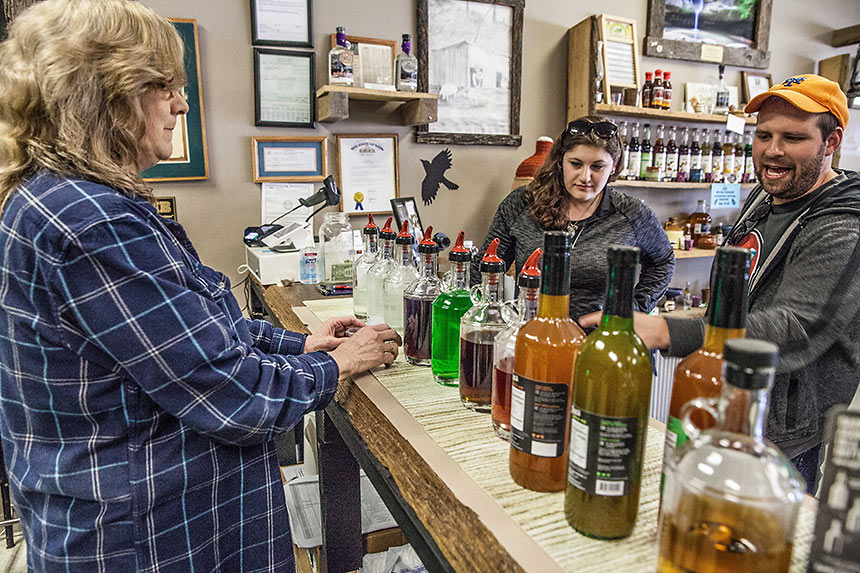
On our last morning we headed for the Hocking Hills Moonshine, one of the last legal makers of old-timey corn liquor. Distilled on site, the moonshine is made of local spring water and crack corn (hard, dry kernels), the kind that comes in big sacks labeled “animal feed.”
Stepping up for a taste, I wavered. Would I like the 80-proof “original-recipe, the 120-proof “Buckeye Lightning, or one of the tame, fruit-flavored liquors? The clerk waited, glass poised in mid-air. To heck with a swallow. After all, I’d hiked up a hill, rappelled off Old Rocky Top and lived to tell about it. “I’ll buy a bottle,” I told the clerk. “I want to get MY corn liquor from a jar.” “Hey,” said Mary, waving the car keys. “One sip. You’re driving.”
The Nitty Gritty:
Going: Fly to Columbus, Ohio, drive southeast on US 33 to Lancaster and Logan.
Staying: The Inn & Spa at Cedar Falls, State Rt. 374, Logan.
Hocking Hills Tourism Association; Visitors Guide at 800-hocking or 740-385-2750.
Eco-tours/rappelling: High Rock Adventures
Zip lining: Hocking Hills Canopy Tours
Hocking Hills Moonshine: tour and tasting, 519 East Front Street, Logan. 740-347-9044.
Recommended reading: Eckert, Allen, “That Dark and Bloody River,” Bantam Books
